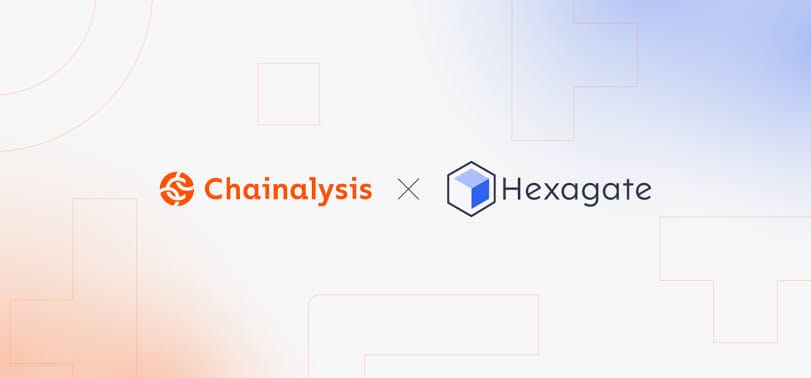Chainalysis Acquires Hexagate to Bolster Web3 Security Measures

Introduction
The fast-paced growth of decentralized finance and blockchain applications has opened the door to a wave of innovation, but it also comes with increased security challenges. On May 20, 2025, the prominent blockchain analytics company Chainalysis revealed its acquisition of the Israeli Web3 security firm Hexagate. This strategic partnership is designed to enhance Chainalysis’s abilities in threat detection, on-chain risk assessment, and proactive protection for users and institutions navigating the crypto world.
In this article, we’ll take a closer look at:
- Why Chainalysis and Hexagate make such a great team.
- The key improvements Hexagate brings to Chainalysis’s platform.
- What this means for Web3 security and DeFi ecosystems.
- The next steps and what the future holds.
1. A Strategic Partnership: Chainalysis Meets Hexagate
Chainalysis has established itself as a leader in on-chain intelligence, providing real-time monitoring, regulatory compliance tools, and investigative services to help track down illicit activities. Their solutions empower exchanges, financial institutions, and government agencies to identify and combat fraud, money laundering, and sanctions evasion.
Hexagate, which was founded in 2021, focuses on automated smart contract audits and ongoing security monitoring for decentralized applications (dApps). By utilizing formal verification techniques, Hexagate can spot vulnerabilities before they go live, helping to prevent exploits that could result in significant financial losses.
Why is this important? By merging Hexagate’s pre-deployment audit processes with Chainalysis’s real-time alert systems, they will create a comprehensive security solution that covers every stage of smart contracts and transactions in the Web3 environment.
2. Key Enhancements from Hexagate
| Capability | Pre-Acquisition Chainalysis | Post-Acquisition Synergy |
|---|---|---|
| Smart Contract Audits | Limited manual reviews | Automated, formal verification–backed audits via Hexagate |
| Continuous Monitoring | On-chain transaction scanning | Real-time contract state analysis + threat scoring feeds |
| Risk Scoring & Compliance | Entity risk intelligence | Integrated vulnerability scores for dApp developers and compliance teams |
| Developer Tooling | API-driven analytics | IDE plugins and CI/CD integrations from Hexagate for secure deployments |
This integration allows a DeFi protocol to automatically scan its codebase with every commit, receive alerts about vulnerabilities, and view on-chain risk profiles—all from the Chainalysis dashboard.
3. Strengthening the Web3 Ecosystem
3.1 Proactive Defense
By integrating Hexagate’s automated security audits, Chainalysis is moving from a reactive approach to a proactive defense strategy. This shift aligns with the industry's growing emphasis on “shift-left” security, which focuses on identifying vulnerabilities early in the code review process.
3.2 Enhanced Trust & Compliance
For regulated entities, the combination of on-chain monitoring and pre-deployment audits creates a more robust compliance framework. Companies can prove their due diligence not just through transaction reporting but also by demonstrating thorough scrutiny at the code level.
3.3 Developer Empowerment
Hexagate’s tools, like IDE plugins, make it easier for developers to adopt best practices in smart contract development. This fosters a healthier and more secure DeFi environment, ultimately reducing the chances of high-profile exploits.
4. Implications for Mitosis Ecosystem
As Mitosis expands its range of DeFi products, the Chainalysis-Hexagate integration stands out as a strong model for comprehensive security:
- Audit Integrations: Mitosis partners and contributors can consider implementing similar CI/CD audit pipelines to ensure that new modules meet security standards
- On-chain Monitoring: Utilizing advanced analytics can help Mitosis identify unusual behaviors, protect liquidity vaults, and maintain user trust.
- Community Governance: Strong security tools can inform governance proposals, allowing for transparent risk assessments prior to protocol upgrades.
For a deeper dive into implementing secure development workflows, see our guide on withdrawing from Matrix Straddle Vaults and learn how continuous monitoring supports state transitions. You may also find insights in our recent analysis of the Sui and Bitlayer partnership, which underscores the importance of cross-chain security measures.
Conclusion
The acquisition of Hexagate by Chainalysis is a major milestone for Web3 security, bringing together top-notch blockchain analytics and thorough smart contract audits before deployment. As the crypto world evolves, having proactive defense strategies and clear risk management will be essential for fostering innovation and gaining institutional trust.
Key Takeaways:
- End-to-end security: From code commits to transaction monitoring, we can identify and address vulnerabilities effectively.
- Regulatory advantage: Detailed audit trails enhance compliance efforts.
- Ecosystem growth: Tools designed for developers contribute to a safer DeFi environment.
Looking ahead: Will other analytics companies follow this trend? How will decentralized protocols manage the balance between quick market entry and stringent security measures? We’d love to hear your thoughts below or suggest a community initiative in our governance forum.
Internal Links
- Web3 (Glossary)
- Blockchain Analytics (Glossary)
- Smart Contract (Glossary)
- Liquidity TVL Glossary
- Expedition Boosts
- Straddle Vault
- Mitosis University
- Mitosis Blog.
- Mitosis Core: Liquidity Strategies.
Feel free to explore these resources to strengthen your understanding and contribute to Mitosis University’s mission of accessible blockchain education.



Comments ()